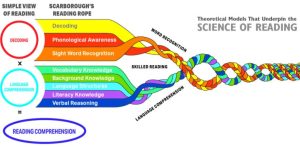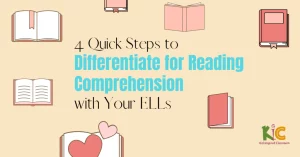Introduction
In the realm of education, literacy stands as a cornerstone for academic success and lifelong learning. Proficient reading skills serve as a gateway to accessing knowledge across subjects and nurturing critical thinking. However, the persistent challenge of subpar reading proficiency in schools necessitates a thorough investigation into broader educational reforms. To effectively address this issue, a multifaceted approach is imperative, encompassing various aspects of pedagogy, curriculum, resources, and community engagement.
Understanding the Core Challenges
Before delving into potential reforms, it’s crucial to identify the core challenges hindering literacy improvement. One key factor is the lack of personalized learning approaches tailored to individual student needs. A one-size-fits-all methodology often overlooks diverse learning styles and abilities, leading to a disconnect between teaching methods and student comprehension. Furthermore, the shortage of resources and funding in educational institutions significantly impacts the quality of reading programs. Insufficient access to updated learning materials, libraries, and technological tools impedes the development of strong reading habits among students.
Proposed Reforms
Personalized Learning Initiatives
Implementing personalized learning models that cater to individual student needs can significantly enhance literacy. Adaptive teaching methods, leveraging technology and data analytics, enable educators to tailor lesson plans, allowing for differentiated instruction and addressing diverse learning paces and styles.
Comprehensive Literacy Curriculum
A holistic and comprehensive literacy curriculum should be integrated across all subjects and grade levels. Emphasizing reading comprehension, phonics, vocabulary, and critical thinking skills within various disciplines ensures that students continually engage with literacy in meaningful contexts.
Professional Development for Educators
Continuous training and professional development programs for teachers are vital. These initiatives should focus on enhancing their skills in literacy instruction, incorporating new methodologies, and adapting to the evolving needs of students. Empowering educators equips them with the tools necessary to effectively impart crucial reading skills.

Increased Resource Allocation
Allocating adequate resources, including books, digital tools, and library materials, is imperative to foster a culture of reading. Robust library programs and access to diverse reading materials encourage students to explore various genres and expand their literary horizons.
Community Involvement and Support
Engaging parents, communities, and local organizations in promoting literacy is essential. Collaborative efforts between schools and communities can establish reading initiatives, such as book clubs, reading challenges, and literacy workshops, fostering a supportive environment for students both inside and outside the classroom.
Early Intervention Programs
Identifying and addressing reading difficulties at an early stage is crucial. Implementing specialized intervention programs for struggling readers ensures timely support, preventing literacy gaps from widening as students progress through their academic journey.

Conclusion
Enhancing literacy proficiency in schools requires a comprehensive and multifaceted approach that addresses the diverse needs of students while fostering an environment conducive to reading and learning. By implementing personalized learning strategies, revamping curriculum frameworks, empowering educators, securing adequate resources, fostering community engagement, and prioritizing early intervention, educational institutions can pave the way for significant improvements in reading proficiency. These reforms not only elevate academic achievement but also equip students with essential skills necessary for success in their academic pursuits and beyond.




